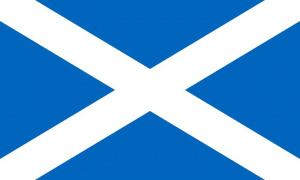Language/Scottish-gaelic/Grammar/Conjugating-Regular-Verbs
| ◀️ Personal Pronouns — Previous Lesson | Next Lesson — Numbers 1-20 ▶️ |
Congratulations! By now you have mastered the basics of the Scottish Gaelic language, including how to introduce yourself, ask questions, and talk about common objects and activities. In this lesson, we will focus on regular verbs and how to conjugate them in the present tense. This will allow you to have more complex conversations and express a wider range of thoughts and ideas.
Scottish Gaelic Regular Verbs
As in many other languages, Scottish Gaelic regular verbs follow a predictable pattern when conjugated. In the present tense, regular verbs fall into three categories:
- Verbs that end in -aidh
- Verbs that end in -eas
- Verbs that end in -idh
Here are examples of each:
| Scottish Gaelic | Pronunciation | English |
|---|---|---|
| smaoinich | smoy-nikh | think |
| cóta | koh-tuh | wear (a coat) |
| fuiling | foo-ling | endure |
Present Tense Conjugation
To conjugate regular verbs in the present tense, we remove the -aidh, -eas, or -idh ending and replace it with the appropriate present tense suffix:
- -aidh verbs take the suffix -im, -idh, -idh, -imid, -idh sibh, -idh iad
- -eas verbs take the suffix -im, -as, -as, -amid, -as sibh, -as iad
- -idh verbs take the suffix -im, -ir, -ir, -imid, -ir sibh, -ir iad
To make it clearer, let's take the verb "smaoinich" and conjugate it for all personal pronouns:
| Scottish Gaelic | Pronunciation | English |
|---|---|---|
| tha mi a' smaointinn | ha mee uh smoy-nitchk | I am thinking |
| 's e thu a' smaointinn | shay hoo uh smoy-nitchk | You are thinking |
| 's e/es/s/i/sibh/iad e/o/i/oimid/as/as/iad a' smaointinn | shay/esh/s/eev/eed ay/oh/e/ohmeech/as/ahs/eed uh smoy-nitchk | He/She/It/We/You/They are thinking |
As you may have noticed, the present tense of "smaoinich" changes depending on the personal pronoun used, and this rule applies to all regular verbs. It is important to memorize these conjugations, as they will form the basis of your understanding of Scottish Gaelic grammar.
Examples of Regular Verbs in Scottish Gaelic
Here are some examples of regular verbs in Scottish Gaelic, along with their present tense conjugations:
| Scottish Gaelic | Pronunciation | English | Present Tense |
|---|---|---|---|
| can | kahn | sing | canaim, canaidh, canaidh, canamid, canaidh sibh, canaidh iad |
| èist | ehsht | listen | èistim, èistidh, èistidh, èistimid, èistidh sibh, èistidh iad |
| lorg | lorrg | find | lorgaim, lorgaidh, lorgaidh, lorgamid, lorgaidh sibh, lorgaidh iad |
| èirigh | eh-ree | get up | èirichim, èirichidh, èirichidh, èirichimid, èirichidh sibh, èirichidh iad |
| glan | glahn | clean | glanaim, glanaidh, glanaidh, glanamid, glanaidh sibh, glanaidh iad |
Irregular Verbs in Scottish Gaelic
While regular verbs follow predictable patterns, there are also several irregular verbs in Scottish Gaelic that you will need to memorize. Examples include:
- Tha (to be)
- B' e (to be)
- Feum (to need)
- Taing (to thank)
- Dèan (to do)
These verbs have unique conjugations in the present tense, and you will need to spend time practicing and memorizing them in order to become comfortable using them in conversation.
Practice
Now that you have some experience with regular verb conjugation, it's time to practice! Use the verbs and tables provided to create your own sentences in Scottish Gaelic. Experiment with different personal pronouns and tenses, and don't be afraid to make mistakes--that's how we learn!
Conclusion
In this lesson, you learned how to conjugate regular verbs in Scottish Gaelic in the present tense. Remember that practice makes perfect, so make sure to spend time each day practicing your new language skills. In the next lesson, we will continue to build on your knowledge of Scottish Gaelic by exploring numbers, time, and dates.
Other Lessons[edit | edit source]
- How to Use Be
- Conditional Mood
- How to Use Have
- Linking with Conjunctions
- Negation
- Negating Sentences
- Adjectives
- Pronouns
- 0 to A1 Course
- Noun Gender and Plurals
| ◀️ Personal Pronouns — Previous Lesson | Next Lesson — Numbers 1-20 ▶️ |

